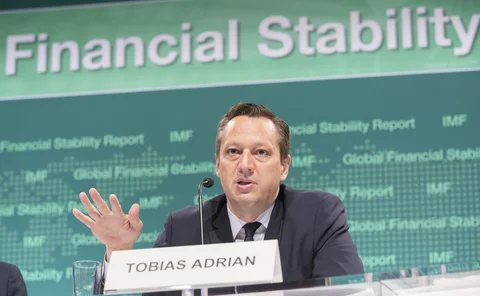Credit conditions
Reserve requirements an effective tool to balance capital flows – BIS research
Higher interest rates encourage more inflows, but adjustments in reserve requirements can strike a better balance
Spanish banks strongly influenced by knowledge of firms, paper finds
Banks’ understanding of clients helped smooth credit contraction during financial crisis – researchers
Eurozone mortgage lending back to pre-crisis levels – ECB
New loans reached 4.5% of GDP in the year to March 2018; average since 2001 is 4.4%
Kenyan banks forced to reveal hidden loan fees
Kenya’s central bank begins effort to repeal interest rate cap
Competition and profits biggest factors in eurozone credit supply – ECB
Robust growth is expected in all main areas of credit in next quarter, says ECB
Financial literacy of Italians below G20 average – Bank of Italy
Less than half of survey respondents are able to calculate a simple interest rate
Employer-employee loans can cut credit risk - Minneapolis Fed article
Research looks at Minnesota scheme
RBI pledges to create public credit register
Existing system is fragmented, making it hard to accurately assess a borrower’s credit history
Switzerland weighs bold monetary experiment
On June 10, Switzerland will vote on whether to revolutionise its monetary system and hand the central bank a monopoly on money creation
UK’s FCA to act on banks using overdrafts as revenue source
Regulator proposes rules to improve transparency around the cost of credit, with plans to ban fixed fees if necessary
Lowe says RBA is closely monitoring China’s shadow banks
Interconnections mean trouble in Chinese markets would likely spill into Australia, governor says
Belize must act to escape cycle of defaults – IMF staff
The country has completed a third debt restructuring in a decade, but IMF research says fiscal consolidation is needed to put debt on a “clear downward trajectory”
Structural measures are boosting competition – Bank of Israel report
The banking supervision department is looking to increase competition in the banking sector
Technology can support comprehensive credit risk management – panellists
The expansion of balance sheets since the crisis has created new challenges for central banks
The toxicology of post-crisis shadow banking
Mark Carney tempted fate in 2017 when he declared the most toxic forms of shadow banking “no longer represent a global stability risk”. Did he speak too soon?
SNB governor condemns 'sovereign money initiative'
Thomas Jordan calls on voters to reject proposal for new credit system
Curbs on interest-only loans have cut risks – RBA’s Kent
Regulatory actions have helped reduce risks in what had been a fast-growing sector
Claims on offshore centres at record high – BIS data
Overall cross-border claims “gained momentum” in Q4 2017
BoE’s Brazier: credit risks ‘stirring’ beneath calm surface
Riskier forms of mortgage debt are on the rise, executive director says
IMF warns of ‘bumpy road’ as rates rise
Financial stability outlook shows risks rising in the short run and “elevated” in the medium run
Financial conditions in Denmark tighten in Q1
Implementation of new mortgage lending regulation is the main cause of credit reduction
Student debt becomes a bigger threat to US financial stability
The debt has surpassed auto loans and credit cards, and now only trails mortgages
Macro-prudential policies cool Sweden’s housing market
Private debt continues to increase, but loan-to-value ratios are falling
Risky firms can transmit financial cycle – BIS paper
Authors find smaller, younger firms are more likely to tap into global markets during risk-on phases, creating vulnerabilities























